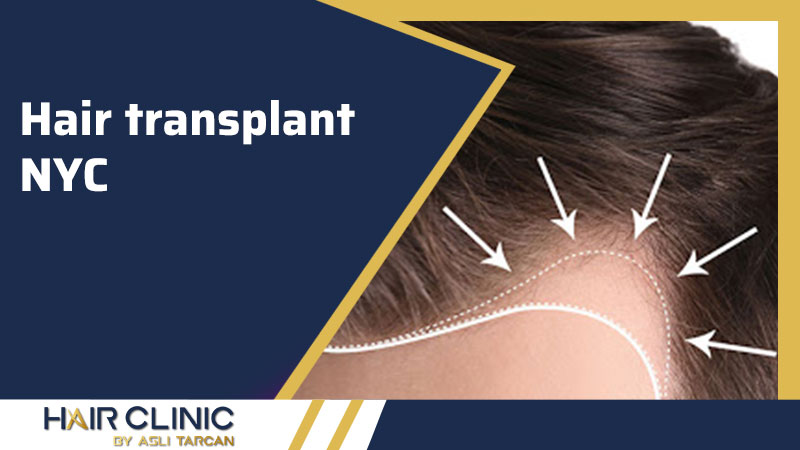Hair Transplant NYC The transplant surgery hair is a procedure in which the specialist transplants the hair from the head of the area of the donor – is on top. It’s the dorsal part or the crown of the head. The specialist can transplant it anywhere in the lead, the patient is bald, or his hair is thinning. Once transplanted, the hair will keep growing throughout the person’s life.
Best hair transplants are based on the discovery of a few doctors. They are pointing out that the hair maintains the natural and permanent characteristics of the donor area. In such a way, the hair will continue to grow even after transplantation to new scalp parts.
Hair Transplant NYC
The Follicular Unit Collection: FUT vs. FUE
Donor Strip in Follicular Unit Transplantation (FUT). Follicular grafts, each containing 1, 2, 3, or 4 hairs, can be “harvested” from the donation zone in two ways. The primary method is follicular unit transplantation (FUT). A second method’s name is follicular unit extraction (FUE).
In FUT, the harvesting method’s name “the stripping harvest.” In this procedure, the doctor removes a single, thin layer of skin from the donor site. The doctors examine this “donor strip” with the help of stereomicroscopes in small grafts of follicular grafts. The specialist allocates the stroke grafts in the recipient area. This process yields the best hair growth and the best result.
Donor Zone in Extraction of Follicular Grafts (FUE)
In FUE, the specialist harvests follicular unit grafts directly from the scalp, one graft at a time. The surgeon uses a pointed instrument, typically about one mm, to remove the skin’s follicles. Like the follicular unit transplant procedure, a follicular graft is set in the recipient area, where it takes root and starts to grow new hair. The advantage of this process is that the person can cut their hair on the back of the head slightly shorter than the FUT.
Hair Transplant Repair
Over the years, hair transplant surgery used techniques that today are considered out of date and, cosmetically, inadequate to remedy hair loss. These processes included: “hair plugs,” a scalp reduction, and fins. While these procedures are rarely done today, many people still suffer the social malaise of living with the results of unwell planned and managed transplants. The most experienced hair transplant and restoration surgeons are frequently called to repair or hide these ancient procedures’ damage.
In fixing or enhancing transplants using large grafts, surgeons use a process called “combined repair. “In “combined repair,” they remove large grafts with a procedure called “graft removal,” and then divided them into individual follicular unit grafts. These small follicular unit grafts are set in the scalp in an aesthetically pleasing way to give the patient more natural hair. Camouflage techniques can also find their use by the hair transplant surgeon to cover or hide cosmetic problems. Some hair transplant techniques that help camouflage unsuccessful transplants are performed when the surgeon closes the hairless spaces created wrongly in the first implant.
Eyebrow Transplant Surgery
The transplant surgery eyebrows are similar to the other hair transplant procedures but require more demanding techniques. As in hair transplants, specialists remove follicular unit grafts from the scalp’s donor area and then implant them in the eyebrow. However, the brow’s anatomical characteristics require special techniques to create aesthetically acceptable and natural-looking results in this very cosmetically important area. One method is to implant the follicular grafts at an acute angle as long as the growing hair grows flat and tightly attached to the forehead. To mimic the orientation of natural eyebrow hair.
Eyebrow transplants carry out in patients who have lost part or all of the eyebrows through an accident, have scars on the eyebrow, or have lost their eyebrows due to too much styling them, or have them damaged by the use of cosmetics or chemical agents.
Surgery Overview
Hair transplant surgery consists of bringing hairs and hair follicles from an area with much hair to a place where the hair is becoming thinner or bald. This technique can generate a natural look on the forehead and a dense, natural face on top of the head.
Specialists remove hair follicles and hair from one part of the head either with a tubular instrument called a punch or a scalpel. They transplant strands into tiny holes or cuts in the balding parts of the scalp. In most cases, you will need many surgeries to get the density you want.
What to Expect After Surgery?
Hair may often fall out after transplantation, but new hair will grow in the transplanted hair follicle. But it may take some time before you can see the new hair growth.
The success and degree of hair density in an area of transplantation depends on the number of hair follicles remaining healthy post-procedure. You will probably need many surgeries to get the hair density you want. Healing between surgeries usually takes several months.
Why is it done?
Hair transplant surgery is suitable for covering bald spots on the scalp.
Effectiveness
The success of hair density depends on the number of hair follicles that remain healthy posterior to the transplant. You will probably need many surgeries to get the hair density you want.
Risks
The risks of hair transplantation surgery include:
- Death of the hair follicles prior to the transplant, in which case no new hair will grow back.
- An unnatural appearance with hair growth in strands.
Best hair transplant surgery can be a permanent treatment for hair loss, but it can be expensive and may require multiple surgeries and up to 2 years to reach a desirable density. No other factor could influence cosmetic surgery results as markedly as the physician’s level of experience. Don’t be afraid to ask about how much experience the doctor has with the procedure you are considering. Hair Transplant NYC



